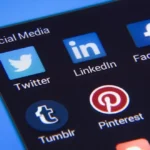Okay, so I was catching up with Georgia the other day – she’s a whizz in public relations and communications, you know, the kind of person who can smooth over any crisis with a perfectly crafted message. We got talking about the usual, latest campaigns, flops and successes, and then the conversation naturally drifted to the importance of truly understanding your audience. That’s when we really dived into the juicy stuff: psychographics.
“It’s not enough just knowing someone’s age and where they live anymore,” Georgia stated, taking a sip of her latte. “That’s demographics 101. If we want to connect on a deeper level, especially during a crisis or a product launch, we need to understand their values and beliefs. We have to dig into the ‘why’ behind their actions.”
That’s essentially what psychographic profiling is all about: moving beyond simple demographic categories like age, location, and income, and looking at the psychological attributes of your target audience. We are talking about motivations, values, interests, lifestyle, and attitudes. Understanding these factors paints a far richer picture of who your consumers really are and, crucially, what makes them tick.
Why Bother with Psychographics? The Communication Goldmine
So, why is this so vital for communication and public relations? Because it allows you to tailor your message in a way that resonates deeply with specific groups. Imagine a scenario: a food company is launching a new range of sustainable, plant-based products. A purely demographic approach might target young adults, but a psychographic approach would identify individuals who are environmentally conscious, health-focused, and value ethical sourcing. The marketing message can then specifically emphasize these aspects, appealing to their core values and increasing the chances of a successful launch.
Georgia elaborated on this, explaining how it’s particularly crucial during a crisis. “Let’s say a company faces criticism over its environmental practices. A generic apology won’t cut it. If their target audience primarily values sustainability and transparency, the company needs to demonstrate concrete changes and communicate them in an open, honest way. This builds trust and mitigates reputational damage.”
Real-World Examples: Successes and Stumbles
Georgia then shared a compelling example of a brand that nailed it. “Think about Dove’s ‘Real Beauty’ campaign. It didn’t just target women, but specifically focused on women who felt misrepresented by traditional beauty standards. Their messaging revolved around self-acceptance and challenging societal norms, resonating deeply with their target psychographic group. They tapped into a real need and created a powerful, long-lasting connection.”
Conversely, she recalled a cautionary tale of a car manufacturer launching a sporty vehicle. Their initial campaign, based on demographic data, focused on young, affluent professionals. However, sales were disappointing. They later discovered that their actual core audience was more psychographically defined: individuals who valued freedom, adventure, and self-expression, regardless of their age or income. By shifting their marketing to reflect these values, highlighting the car’s ability to enable exploration and independent living, they saw a significant boost in sales. This showed how important it is to get the psychographic segment right.
How to Start Your Psychographic Profiling Journey
So, how can you implement psychographic profiling in your own communication strategies? Georgia suggested a few practical steps:
-
Conduct Thorough Research: Use surveys, focus groups, social media listening, and in-depth interviews to understand your audience’s values, lifestyles, and attitudes. Don’t just ask ‘what’ questions; probe the ‘why’ behind their choices.
-
Analyse Existing Data: Look at customer reviews, feedback forms, and website analytics to identify patterns in customer behaviour and preferences. See what customers are naturally telling you about themselves.
-
Create Psychographic Personas: Develop detailed profiles representing your different target groups, including their values, motivations, and communication preferences. These personas should go beyond surface-level information and capture the essence of their identity.
-
Tailor Communication Strategies: Use your psychographic insights to craft targeted messages that resonate with each group. Consider their preferred communication channels, tone of voice, and the types of content they are most likely to engage with.
-
Monitor and Adapt: Continuously track the performance of your communication efforts and make adjustments as needed. Psychographic profiles can evolve over time, so it’s important to stay updated on your audience’s changing values and attitudes.
She emphasized that psychographic segmentation is not a one-size-fits-all solution. It requires continuous effort and a genuine desire to understand your audience on a deeper level. It’s a tool to better understand why your customer does what they do, which gives you a much greater chance of successfully connecting with them.
Georgia’s insights were incredibly valuable. Understanding our audience goes far beyond simple demographics. Psychographic profiling allows us to tailor our messages, build trust, and ultimately, achieve better communication outcomes, particularly in high-stakes situations like crisis management or product launches. By digging into the values and attitudes that drive consumer behaviour, we can create more resonant and effective communication campaigns, making a real impact on our target audience.











